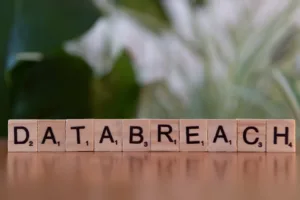
The Ransom.Win64.ASTROLOCKER.THCBDBA ransomware represents a moderate-risk threat with high damage potential, primarily targeting Windows environments. First documented by Trend Micro in March 2021, this malware typically arrives as a secondary payload or through drive-by downloads. Security teams should note its self-deleting behavior and selective file encryption capabilities despite its currently limited distribution.
Technical Analysis of Infection Vectors
ASTROLOCKER employs two primary infection methods: as a secondary payload from established malware infections or through user-initiated downloads from compromised websites. The ransomware exhibits sophisticated behaviors including virtual environment checks and automated cleanup after execution. Unlike many ransomware variants, it maintains an exclusion list for specific file extensions during encryption.
The execution flow follows a predictable pattern:
# Pseudocode of ASTROLOCKER's execution flow
def main():
drop_payload() # Typically from parent process or download
check_virtual_env() # Potential VM/sandbox evasion
encrypt_files() # With extension exclusion list
drop_ransom_note() # Communication with victims
self_delete() # Cleanup after executionKey Indicators of Compromise
Security teams should monitor for these critical indicators:
| Type | Value |
|---|---|
| SHA-256 | 2c44444d207a78da7477ae1af195d4265134e895bebb476f7b2c003f1467a033 |
| SHA-256 | 3dd01b5803b349892e0172c59090a201c819b7a67af859e64b5f4f17fd7ebf91 |
| TOR URLs | w6ilafwwrgtrmilorzqex6pgpvfsa667fydca2wpoluj6sajka225byd.onion |
| accdknc4nmu4t5hclb6q6kjm2u7u5xdzjnewut2up2rlcfqe5lootlqd.onion |
Defensive Recommendations
For security operations teams, we recommend implementing these protective measures:
- Prevention: Block known IOCs at network boundaries and restrict execution from temporary directories
- Detection: Monitor for processes that delete themselves after execution and mass file extension changes
- Recovery: Maintain offline backups with versioning and test restoration procedures quarterly
For threat hunting teams, this sample Splunk query can help identify potential infections:
index=windows EventCode=1
| search (ParentImage="*\\mshta.exe" OR ParentImage="*\\powershell.exe")
AND Image="*\\temp\\*"
| table _time ComputerName User ParentImage Image CommandLineRisk Assessment and Mitigation
The malware presents an interesting risk profile with high damage potential but limited current distribution. Its technical capabilities align with modern ransomware threats, particularly in its self-deleting behavior and targeted encryption. Organizations should incorporate the provided IOCs into monitoring systems and review similar ransomware families for overlapping tactics.
For comprehensive protection, security teams should implement layered defenses including:
- Application whitelisting for unusual locations
- Process tree monitoring for suspicious parent-child relationships
- Email filtering for malicious attachments
References
[1] Trend Micro Threat Encyclopedia – 31 Mar 2021
[2] Trend Micro IOCs
[3] HiNet Security Advisory – 20 Apr 2021






